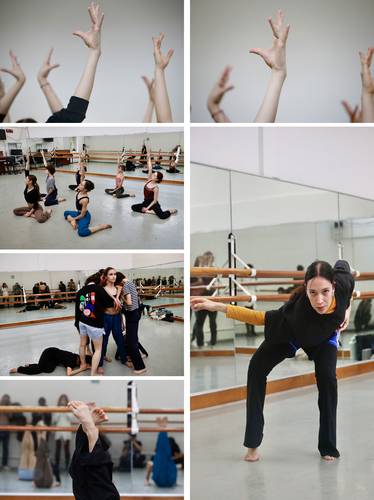The National Dance Company fuses classical and contemporary choreography

The National Dance Company fuses classical and contemporary choreography
The season premieres are divided into two programs that will showcase the diversity of the dancers and the versatility
of the group.
▲ Starting tomorrow, Atman , a performance by six female choreographers, will be presented in the main hall of the Palacio de Bellas Artes. Photo: Luis Castillo
Merry MacMasters
La Jornada Newspaper, Thursday, July 10, 2025, p. 2
The Atman season of choreographic premieres tomorrow, Saturday, and Sunday in the main hall of the Palacio de Bellas Artes aims to continue developing the identity of the Compañía Nacional de Danza (CND). To achieve this, we believe it is necessary to generate new works for the company's repertoire
, says Erick Rodríguez, artistic director of the CND.
In addition to being considered a performing arts laboratory for creation, we care about supporting and encouraging new Mexican choreographers to emerge from within the company
, adds Rodríguez. With these goals in mind, two programs were created: Atman, featuring six choreographies created by women, and International Choreographers, which will be presented on August 29, 30, and 31 and will feature works by five renowned creators, all men. The goal is to combine the intimate and feminine—though not feminist—language of Mexican choreographers with the vision of the personalities who collaborate with the company.
Brazilian Juliano Nunes will present the piece Gratitude , and the ballet Gnawa by Spaniard Nacho Duato will be performed. Also participating will be Brazilian Ricardo Amarante; the Armenian-born German-born Arshak Ghalumyan; and the American James Whiteside, who will perform a duet.
Both programs are based on the intention of generating a new language. We sought to make it diverse and challenging
, Rodríguez points out. Choreographers Sofía Camacho, Yansi Méndez, and Carla Segovia are guests of the CND and come from the field of contemporary dance. It has been a challenge for them to work with classical ballet dancers, and for us to confront the language of contemporary dance. Our goal was to step out of our comfort zone, showcase the diversity of our dancers, and the versatility of the company
, the artistic director assures La Jornada . The other three choreographers (Sonia Jiménez, Jacqueline López, and Michele Cutri) do belong to the CND.
The same goes for foreign choreographers. Figures of different nationalities, with different languages and visions, were sought to work with other dancers and thus enrich the company in terms of movement, language, in every sense, and then present the result to the public
.
One of the CND's main goals is to preserve the great ballet classics. This year, Swan Lake and Coppelia were staged, and The Nutcracker is still pending. However, it was necessary for our dancers to master different languages. That's why these two seasons are completely different from classical ballet. In them, we can work on both neoclassical and contemporary dance styles. All the companies in the world do it, and I believe we can do it too
, says Rodríguez.
Jacqueline López is the author of Convergencia , with original music by Alonso J. Burgos and the second of three chapters that make up the trilogy Atman, a word that refers to essence, breath, soul, or self
, according to Hindu philosophy, and gives the season its title. The other two choreographers are Jiménez and Cutri. “Each one decided what she was going to dance and with whom. I decided to work only with women. There are now 14 of them, and they are always on stage. In Convergencia, I question the essence of being a woman. It has a classical ballet language, and they all wear pointe shoes,” says López.
The other two pieces in Atman also incorporate a classical language, unlike the works of Camacho, Méndez, and Segovia, which emerged from contemporary dance. However, the three choreographers use different languages, from body language to the way they express their themes
, López points out.
Camacho's Umbra refers to the lunar phases
, Méndez's On time proposes a scenic reflection on existence and time, and Segovia's Gravity groove explores the fatigue and weight of facing the world
. Umbra 's sound design is by Fernanda Medina, On time features original music by Isay Ramírez, and Gravity groove is by Aristóteles Benítez.
For López, the focus of the Atman season is on presenting work by women and showcasing the versatility of the dancers, who, despite performing Sleeping Beauty and Swan Lake , can move in a different way. Furthermore, "although our works include ballet, it's not the ballet from Swan Lake ."
All premieres will be incorporated into the CND's repertoire and may be performed at any time.
jornada




